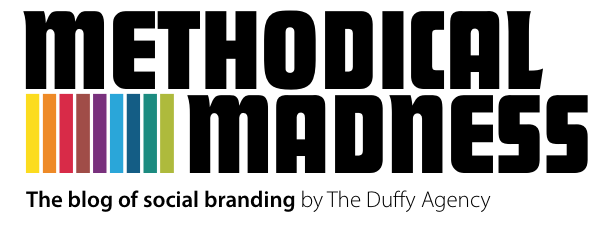The limitations of growing a social media campaign
 Friday, January 22, 2010 at 3:08PM
Friday, January 22, 2010 at 3:08PM
A look at the technical restrictions we discovered during our last social media campaign
Due to the tight deadlines we had and the brevity of the campaign, we mounted as aggressive a campaign as we could to push out the client's message. We don’t recommend using social media assets as aggressively as we did for this campaign. Social media growth should be paced and nurtured, not a quick grab for as many followers as you can attract. These sites should be used to develop a community and build brand loyalty. By being as aggressive as we were, our actions could have just as easily been deemed spam and our entire campaign could have collapsed as quickly as it started. Fortunately, that wasn’t the case. The following information is for general knowledge of what we learned from the campaign and not recommended as a best practice scenario.
Before we even began, we did our research and targeted individuals that self-identified with our client’s cause. By doing extensive market research, we were able to propel the campaign forward and get the client’s message out to the people that would be most receptive to it. This step was the most important thing we did. Before any social media campaign begins, having a plan of attack and good research will make your efforts go much further.
Looking to reach as many people as quickly as possible, we used Twitter as our main tool. Twitter allowed us to grow the other assets and drive traffic to the site more than anything else we did in the beginning. Through it, we promoted the pages of the site we wanted people to pay attention to, alert people to the other social media campaigns and find new followers. The Twitter 2000 follower ceiling is well documented. You can’t follow 2000 more people than are following you. What is less known is how it applies to the first 2000 followers. Twitter doesn’t want individuals to create accounts and just go crazy following people. It created a problem in growing followers as we hit that ceiling. Here are the limits we found:
- You can’t follow more than 500 people in a day
- You can’t have 2000 more followings than followers
- Twitter will block you from following people if you are too aggressive
- Once you reach the 2000 following limit, you can delete followers and add new people until your follower total catches up

We used Facebook as gathering place for people to allow them to self-identify with the campaign. With 350 million users, it’s the place to go to find people interested in any brand or cause. We created a Facebook fan page and a profile page based on the brand. The fan page was used to push our message and keep fans updated on what was happening with the campaign. The profile page was created to find people and directly interact with them in a way you can’t with a fan page. From the profile, we were able to find people and then invite them to join the page and the website. Through the profile page, we were also able to join other groups and leave comments on their walls. Facebook’s limits are more cryptic than Twitter’s and appear to be arbitrary. Here are a few of the limits we discovered:
- Sending out more than 50 friend requests will get your friending privileges revoked for a period
- You can’t post the same message on more than five wall’s
- Slightly vary your message from wall to wall. It will take the Facebook algorithm time to discover your activity
- If you’re going to be aggressive in your Facebook activity, limit it to one day a week, then use the site on a slower level through the rest of the week to keep from getting flagged.

The campaign site focused heavily on a video component, which naturally brought YouTube into play. The site encouraged people to leave a video that would then be uploaded onto the YouTube channel. The more videos we uploaded, the more traffic the channel got. This is the one area that really took care of itself. There aren’t many limits with YouTube, but we did find a couple:
- You can only subscribe to 10 channels a day
- If you don’t upload your own videos, the analytics won’t work.
For the first half of the campaign, the social media effort was the only advertising that was used. We saw great initial site traffic, but once people saw our message, it was difficult to attract them back and site traffic trailed off. In week 6, we added Google AdWords and Facebook ads and saw our traffic more than double the projected total site traffic.
In the end, the social media campaign was successful. Our final numbers were:
Twitter: 2042 followers
Facebook: 324 fans
YouTube: 719 views
Given the limitations of the campaign (no initial advertising, almost zero awareness of the issue and creating all assets from the ground up), after eight weeks, we had 3.7 million targeted impressions and over 15 thousand people interacted with the brand.
Five lessons learned:
- The more planning you do up front, the easier it will be to connect to the right people.
- Don’t try to outsmart the sites. It’s not worth the potential backlash you attract.
- The more you don’t talk about yourself, the better people respond.
- If you feel like you’re spamming people, you probably are.
- It’s ok to be aggressive, just know the limits.
Stefan Halley is the Digital Project Leader for The Duffy Agency. He loves to talk about social media and won't shut up about Twitter.

Reader Comments